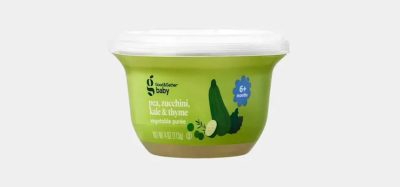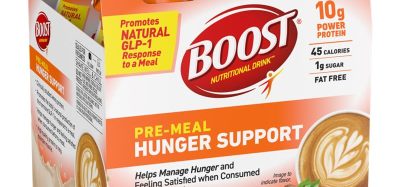Heavy metals: the case against the naturally occurring argument
- Like
- Digg
- Del
- Tumblr
- VKontakte
- Buffer
- Love This
- Odnoklassniki
- Meneame
- Blogger
- Amazon
- Yahoo Mail
- Gmail
- AOL
- Newsvine
- HackerNews
- Evernote
- MySpace
- Mail.ru
- Viadeo
- Line
- Comments
- Yummly
- SMS
- Viber
- Telegram
- Subscribe
- Skype
- Facebook Messenger
- Kakao
- LiveJournal
- Yammer
- Edgar
- Fintel
- Mix
- Instapaper
- Copy Link
Posted: 11 February 2020 | Jaclyn Bowen | No comments yet
Jaclyn Bowen takes a look at how the concern of heavy metals in food is sometimes undermined by the argument that they are naturally occurring, and speaks with the CEO of Ellipse Analytics to find out his views.


Heavy metals have been of increasing consumer concern and we continue to see this play out in food exposés. From the recent investigation of lead in prenatal vitamins, to levels of arsenic in America’s best-selling bottled waters, food and consumer advocates are waging a public war on industrial and environmental contaminants in the food supply via mainstream media.
Heavy metals (including arsenic, cadmium, lead, and mercury) are elements present in the earth’s crust. Because of things like volcanoes and earthquakes, these metals are brought to the surface of the earth. Whether elemental or not, public health experts have been raising the alarm over these heavy metals and their links to adverse health effects including cancers and reproductive harm, but the argument that they are ‘naturally occurring’ still often persists.
I spoke to Kevin Hicks, Founder and CEO of Ellipse Analytics, accredited analytical chemistry laboratory and data solutions provider, to get his thoughts on the ‘naturally occurring’ stance.
Ellipse Analytics is an expert in the testing consumer packaged goods categories for purity, superiority and label accuracy, Hicks explained. “We rank products and brands based on how each performs against the other brands and products in that category.”
Testing for contaminants
“We routinely test for total arsenic, cadmium, lead and mercury. We can speciate arsenic and test for additional heavy metals on the periodic table but our primary focus is these four. We use an Inductively Coupled Plasma Mass Spectrometer (ICP-MS) – a type of mass spectrometer that ionises the sample so the heavy metals can be detected. We are ISO 17025 accredited and can confidently test down to two to four parts per billion (ppb) depending on the complexity of the matrix. The matrix would be anything other than the heavy metals in the sample – sometimes really fatty or oily substances can be more difficult to test,” Hicks said.
Whether elemental or not, public health experts have been raising the alarm over these heavy metals and their links to adverse health effects
He explained that, when hearing from brands about heavy metals, their responses vary. “Some brands want to know the levels of heavy metals in their finished products or ingredients from new suppliers,” he said. “These brands want to ensure compliance with regulations like California Proposition 65 and are looking for laboratories with really strict sensitivities. Many brands want to do what’s best for their brand and what’s best for public health.
“On the other hand, I’ve had brands ask me if we could not test that low for their samples. I had one brand attempt to school me that organic arsenic was the good kind of arsenic. I had another brand tell me that lead is good for dogs and cats because it helps with weight gain. Our view at Ellipse Analytics is that industrial and environmental contaminants are bad for humans and ingesting fewer contaminants is better for our long-term health.”
Jaclyn Bowen will be speaking at Food Integrity 2020. To find out more about the challenges that the food and beverage industry is facing, the lessons and the solutions, click here to book!


Hicks described hearing from brands that say they are satisfied with their high levels of lead, arsenic, or cadmium test results ‘because they are naturally occurring in the earth’s crust.’ “Meanwhile, I walk through airports and watch the news; consumers and brands are taking precautions because of the naturally-occurring coronavirus. We are putting provisions in place to minimise exposure and protect citizens from coronavirus. Yet, too many brands seem to hide behind the ‘naturally occurring’ argument when it comes to heavy metals in food and consumer products.
In my opinion, our industrial societal choices are having a greater impact on levels of heavy metals in food and consumer products
“Brands choose to glom on to the portion of the FDA website that reads that heavy metals are naturally occurring elements in the environment that can enter the food supply through soil, water or air and that levels in the environment are generally low but can vary depending on the natural geological makeup of local areas,” Hicks said. He stated that brands sometimes dismiss the portion of the FDA website that describes contamination from mining, fracking, coal-fired power plants, and pesticides, which contribute to increased levels of heavy metals in certain locations. “In my opinion, our industrial societal choices are having a greater impact on levels of heavy metals in food and consumer products,” he noted.
“A defence of ‘naturally occurring’ is a con from brands with products that have relatively high levels of heavy metals compared to other products in a given CPG category. Most of us spend a significant amount of effort avoiding or mitigating our exposure to other ‘naturally occurring’ phenomenon such as tornadoes, measles, influenza, hurricanes, Ebola, E. Coli and rattlesnakes.
“Can environmental and industrial contaminants be completely avoided? Of course not. However, by making smart choices a consumer of CPG products can reduce their exposure by well over 80 percent by avoiding the bottom third of products in a category,” he explained.
Certificates of Analysis
“To the non-discerning eye, a Certificate of Analysis that says ‘non-detect’ for contaminants like heavy metals, pesticide residues, and plasticisers (like BPA, BPS, or phthalates), gives a false sense of comfort and security,” Hicks said. “This logic is fundamentally flawed and short-sighted. Not knowing the true contents of your product or a new ingredients supplier exposes a brand to unnecessary risk.
In the absence of federal law regulating levels of heavy metals, Hicks outlined that brands must lean forward and align with consumer expectations, including heavy metals and pesticide residues on their product specifications. “Evaluate and test products for heavy metals and pesticides just as you would for E. Coli and salmonella. With consumers demanding more transparency, use this commitment to ingredient quality sourcing in your consumer-facing communications,” he said.
About the author
Jaclyn Bowen MPH, MS is the Executive Director of Clean Label Project and a food safety and quality systems engineer. Prior to coming to Clean Label Project, she spent 15 years at the World Health Organization Collaborating Centre, NSF International, working on the creation and enforcement of food safety and water quality standards and compliance systems.
Related topics
Contaminants, Food Safety, Health & Nutrition, Lab techniques, Pathogens









